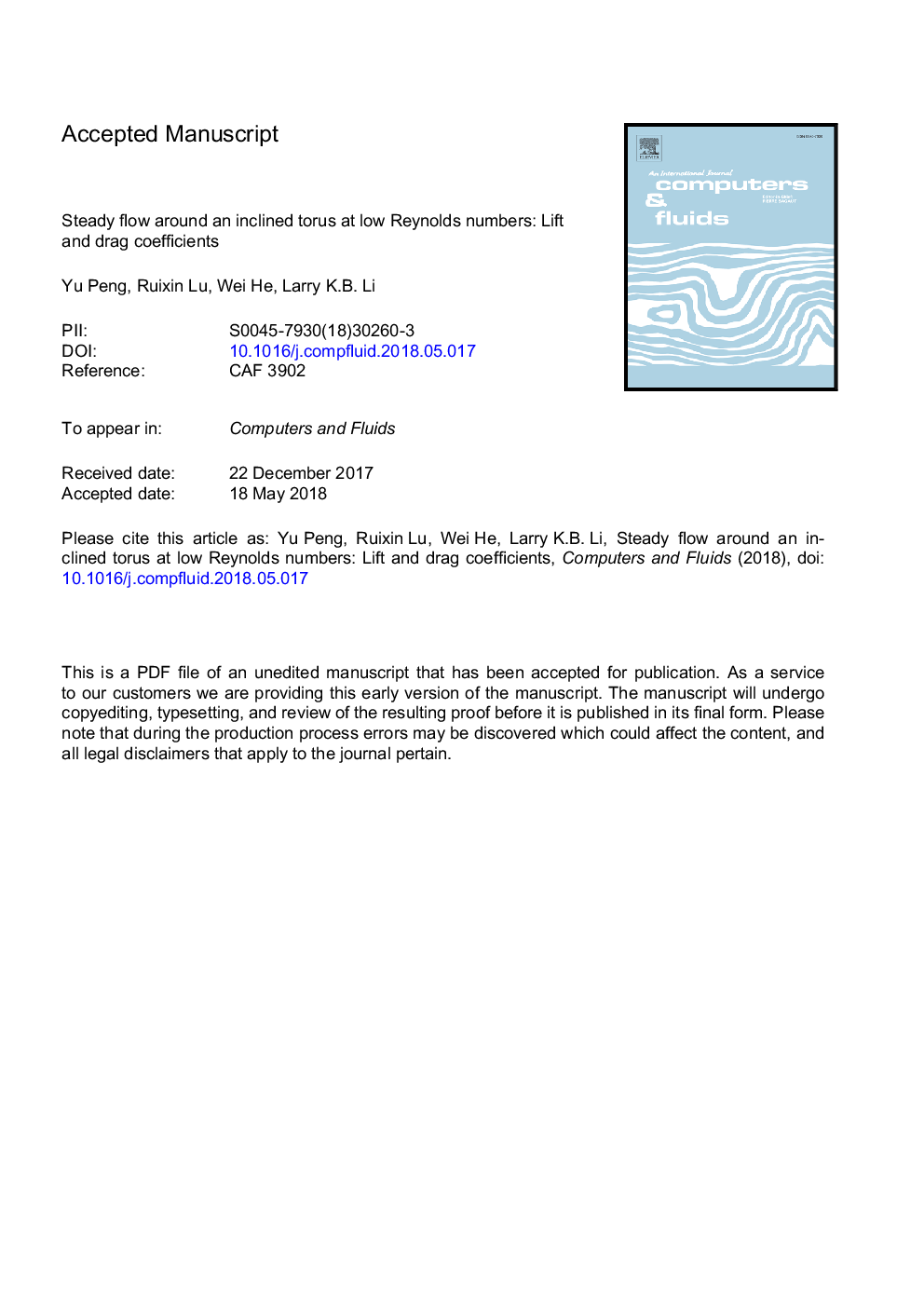| Article ID | Journal | Published Year | Pages | File Type |
|---|---|---|---|---|
| 7155950 | Computers & Fluids | 2018 | 23 Pages |
Abstract
For a fixed Re, we find that as the torus inclines from a flow-normal orientation (θ=0â) to a flow-parallel orientation (θ=90â), the drag coefficient (CD) decreases monotonically, while the lift coefficient (CL) first increases from zero, reaches a maximum at 40°â¯â©½â¯Î¸â¯â©½â¯50° and then returns to zero owing to top-down symmetry at full inclination. The decrease in CD with θ is caused by a decrease in the pressure drag, with almost no change in the viscous drag. The variation in CL with θ is caused by the pressure lift dominating the viscous lift. With increasing Re, the overall trends in CD and CL remain qualitatively unchanged but their quantitative values decrease. Compared with the effects of θ and Re, those of are relatively weak for the specific flow conditions examined here. We conclude by performing a nonlinear regression analysis to generate curve fits for CD and CL in terms of , θ and Re.
Related Topics
Physical Sciences and Engineering
Engineering
Computational Mechanics
Authors
Peng Yu, Ruixin Lu, Wei He, Larry K.B. Li,
